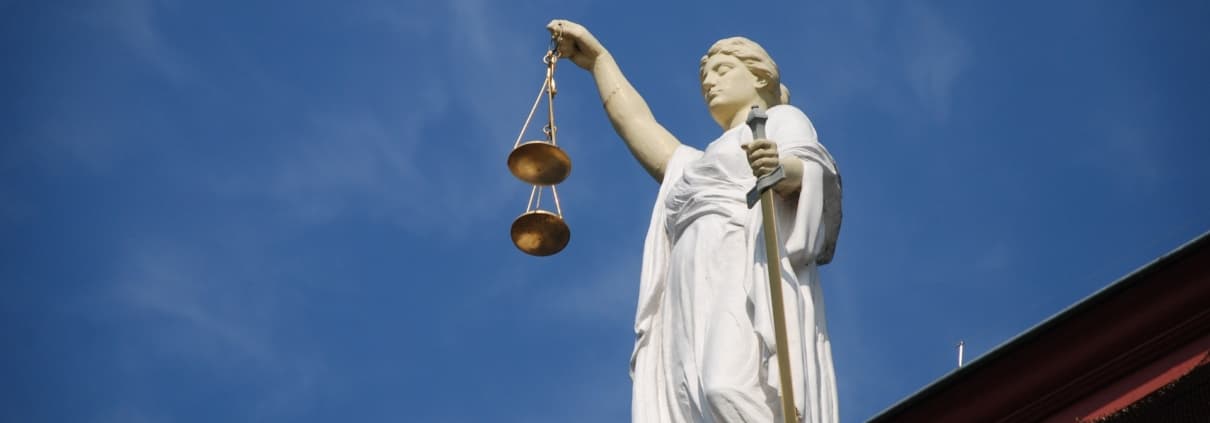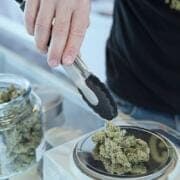The Racist Roots of Cannabis Prohibition and the Argument for Social Justice Reform
The rising tide of cannabis reform has led to an explosion of industry. Legal cannabis sales have grown from c. $3.4bn in 2014 to c. 10.9bn in 2018[1], creating tremendous wealth for entrepreneurs and investors. Legal cannabis now accounts for up to 150,000 jobs[2], and that only considers plant-touching businesses. While we in the industry tend to wear optimist hats and focus on the positive changes, not enough discussion has focused on an area of legislative reform that continues to lag woefully behind: social justice.
With regards to cannabis reform, social justice means that we must ensure people and communities that have been disproportionately impacted by unjust cannabis legislation receive redress for the injustices done to them in the past. Specifically, as outlined by leading cannabis restorative justice group The Last Prisoner Project’s mission, this includes:
– Freeing all people incarcerated for victimless cannabis crimes;
– Automatically expunging past cannabis crimes;
– Reparations to communities of color disproportionately impacted by the War on Drugs; and
– Ensuring that any cannabis legal reform includes measures for robust social equity and workforce development programs for those affected by the criminalization of cannabis.
To understand the need for social justice reform, its important to understand why cannabis was outlawed in the first place. In 1930, Harry Anslinger was appointed as the first director of the US Treasury Dept’s Federal Bureau of Narcotics (a precursor to the DEA), charged with enforcing alcohol Prohibition and illicit drugs. Once alcohol Prohibition was repealed in 1933, Anslinger’s critics argue he needed a new target to ensure a prominent future for his department, and cannabis was the perfect target. Anslinger, who ended up leading the Bureau of Narcotics for over thirty years, was a known racist, making statements including:
– “Reefer makes darkies think they’re as good as white men.”
– “There are 100,000 total marijuana smokers in the U.S., and most are Negroes, Hispanics, Filipinos and entertainers. Their Satanic music, jazz and swing result from marijuana use. This marijuana causes white women to seek sexual relations with Negroes, entertainers and any others.”
– “The primary reason to outlaw marijuana is its effect on the degenerate races.”
As we’ve discussed in a previous post, in 1937 the Marijuana Tax Act was approved by Congress, despite the American Medical Association’s testimony that, “The AMA knows of no evidence that marijuana is a dangerous drug”. The Tax Act increased the price of cannabis such that it effectively outlawed the plant. Support for the Tax Act was garnered predominantly by Harry Anslinger. It was during this time that anti-drug zealots swapped the commonly used term “cannabis” for “marijuana” or “marihuana””, hoping the word would conjure anti-Mexican sentiment.
Subsequently, in 1970 this effective ban on cannabis was codified into law with the Controlled Substances Act (“CSA”), followed by Nixon’s formal declaration of the “War on Drugs” in 1971. The CSA divided drugs into five schedules, from least medically useful and most susceptible to abuse, to more medically valuable with less abuse potential. Cannabis was placed in the most restrictive category, Schedule I. This was supposed to be a temporary designation until Nixon and Congress’s appointed commission, the National Commission on Marijuana and Drug Abuse, completed its report on effective drug policies. The report came out in 1972 and recommended legalizing the recreational use of cannabis, concluding, “The most notable statement that can be made about the vast majority of marijuana users – experimenters and intermittent users – is they are essentially indistinguishable from their non-marijuana using peers by any fundamental criterion other than their marijuana use”.
However, Nixon overruled their recommendation and included cannabis as a Schedule I substance regardless. Being a Schedule I substance, by definition, means that there are no currently accepted medical uses for the drug and the drug has a high potential for abuse. Cannabis remains listed as a Schedule I substance today, despite the fact that prior to the Marijuana Tax Act, cannabis was the third most common ingredient in patent medicine[3]. Why would Nixon go against his own commission’s recommendation? One of Nixon’s aides, John Ehrlichman, subsequently provided commentary that may provide the answer. Ehrlichman stated:
“The Nixon campaign in 1968, and the Nixon White House after that, had two enemies: the antiwar left and black people … We knew we couldn’t make it illegal to be either against the war or black, but by getting the public to associate the hippies with marijuana and blacks with heroin, and then criminalizing both heavily, we could disrupt those communities… We could arrest their leaders, raid their homes, break up their meetings and vilify them night after night on the evening news. Did we know we were lying about drugs? Of course we did.”
Disrupt their communities. Think of the nefarious intent behind that goal. But were they successful? In the US, incarceration rates are 5-10x that of W. European countries. More Americans are arrested for simple possession of marijuana than for all violent crimes combined. Of those arrested, African Americans are arrested at ~3.7x the rate of whites, despite similar rates of consumption. Such racial disparities in marijuana possession arrests exist in all regions of the country, in counties large and small, urban and rural, wealthy and poor, and with large and small Black populations. Of 8.2mn marijuana related arrests (2001-2010), 88% were for possession only. The results are in, and it’s clear Nixon and his Administration, unfortunately, were successful in their goals.
As states have legalized the sale of cannabis, their success in righting these wrongs crosses the gamut. One positive example occurred in June when Illinois became the 11th state to legalize adult-use cannabis. The state created a new paradigm for social justice reform alongside of cannabis legalization. The new law requires 25 percent of new tax revenues generated by legal cannabis sales be set aside for new “Restore, Reinvest, and Renew Programs” or “R3” for low-income communities of color that have been disproportionately impacted by the War on Drugs. The law will further wipe out arrest records for possession of small amounts of cannabis semi-automatically.
At the Federal level, the Marijuana Opportunity Reinvestment and Expungement (“MORE”) Act was introduced to the US Congress in July. Not only would the Act decriminalize marijuana by removing it from the CSA, it would also require federal courts to expunge prior marijuana-related convictions, allow prior offenders to request expungement of their criminal records and, if needed, request re-sentencing hearings. Further, the act would halt the denial of federal public benefits based on marijuana possession or previous pot-related convictions. While the MORE Act faces, at best, an uphill battle, the fact that it has received support by members of the US Congress is indicative of the progress social justice reform has made to date.
In order to best serve the interests of the industry from which we as cannabis capitalists have benefitted, we have a call to action to support social equity and social justice reform. Industry executives and leaders need to push for legislative reform inclusive of the broad-sweeping social justice programs included in Illinois’s Cannabis Regulation and Tax Act and the MORE Act. Its time we right the wrongs of historic cannabis policies and ensure communities disproportionately impacted by unjust cannabis laws receive the retribution they deserve. As lifelong industry activist and Founder of The Last Prisoner Project, Steve D’Angelo, notes, “Those of us fortunate enough to find success and build wealth in the cannabis industry have an opportunity to make sure that every single cannabis prisoner is released and supported through the process of rebuilding their lives by providing support for clemency, expungement and re-entry programs.”
For more information and to support the cause, please visit https://www.lastprisonerproject.org/.
[1] BDS Analytics
[2] The Marijuana Business Factbook 2018
[3] Bearman, David M.D. Drugs are not the Devil’s Tools – The History of Drugs: Discrimination, Greed, the War on Drugs and why Medical Marijuana can Fuel Change. Santa Barbara: Blue Point Books, 2017. Print.
DISCLAIMERS: This site is not intended to provide any investment, financial, legal, regulatory, accounting, tax or similar advice, and nothing on this site should be construed as a recommendation by Key Investment Partners LLC, its affiliates, or any third party, to acquire or dispose of any investment or security, or to engage in any investment strategy or transaction. An investment in any strategy involves a high degree of risk and there is always the possibility of loss, including the loss of principal. Nothing in this site may be considered as an offer or solicitation to purchase or sell securities or other services.










